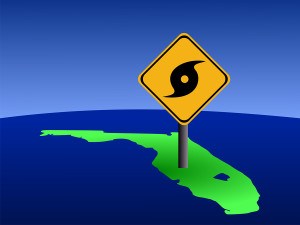

Eight hurricane-free years in Florida and a seller’s market in catastrophe bonds have fortified the state against the cost of major storm damage as the 2014 Atlantic hurricane season starts June 1.
 “Florida is in its best position in a decade,” said Robert Hartwig, president of the Insurance Information Institute.
“Florida is in its best position in a decade,” said Robert Hartwig, president of the Insurance Information Institute.
Yet the nation’s riskiest state for storm damage opens the 6-month-long hurricane season against a backdrop of new condominium towers piling new risk along the vulnerable South Florida coast.
This year Florida stands to benefit from an El Niño weather pattern which forecasters think will hold the number of storms near or below average. However, with images still fresh of coastal devastation in the New York area from Hurricane Sandy in 2012, forecasters caution that it only takes one major storm to make for a disastrous season.
The condo boom is testament to the insatiable appetite for coastal living. More than 200 new residential towers a short distance from Atlantic waters have been proposed for south Florida since the middle of 2011, according to a report by CondoVultures, a Miami-based real estate consulting firm.
At least 50 new high-rises have already broken ground or been completed since 2011.
“The reality is, on balance, the state is in a worse position in terms of sensible decisions about building and putting things in harm’s way in the coastal area,” said Charles Lee, director of advocacy for the Florida Audubon Society.
Smartersafer.org, a national coalition of fiscal conservatives, environmentalists, housing organizations and insurers, on Thursday called for a national mitigation strategy that discourages high-risk development.
“Simply rebuilding isn’t enough. We need to start approaching disasters with a focus on preventing losses rather than simply trying to recover from them,” said Jimi Grande, vice president of the National Association of Mutual Insurance Companies, and a member of the coalition.
Because of its size and geographical position sticking out into the warm waters where the Caribbean meets the Atlantic, Florida is a uniquely risky insurance market. Almost 80 per cent of its insured residential and commercial property – valued at about $3 trillion – lies in coastal areas vulnerable to both wind damage and flooding, according to risk modeling experts.
The last hurricane to hit Florida was Wilma in 2005, which was the end of a string of five major hurricanes to wallop the state over a two-year period.
The calm since those storms has allowed Florida’s Hurricane Catastrophe Fund, designed to help private insurers pay claims, to build its reserves to $13 billion.
The state-run Citizens Property Insurance Corp. – intended as an insurer of last resort but in practice the largest residential carrier in the state – begins the season with a $7.6 billion surplus.
State policy calls for reducing Citizens’ portfolio through rate hikes and tightening coverage limits. Rates for 2014 rose by an average of 6.6 percent, with some coastal policyholders seeing hikes close to the 10 percent cap, said Citizens spokesman Michael Peltier.
The company reduced its 2014 exposure by 40 percent from its 2012 peak. By off-loading policies onto a recovering private market, Citizens cut its numbers to 940,000 and its exposure to under $300 billion.
To backstop its cash surplus, Citizens took advantage of a surge of interest in catastrophe bonds from pension and hedge funds and other non-traditional capital seeking higher yield investments in a low-interest era, as well as investments uncorrelated to standard economic factors.
“What the Federal Reserve does in terms of impacting interest rates, or whether the situation in the Ukraine makes stock markets go up or down, the cat bonds are completely independent of all of that,” Hartwig said.
The competition from an influx of cat bond investors since 2006 cut Citizens’ re-insurance costs by more than half, allowing the company to nearly double its coverage to $3.1 billion, Peltier said.
“Capital market investors are now bearing some of the risk rather than the citizens of the state of Florida or the Florida Hurricane Catastrophe Fund,” Hartwig said.
(Editing by David Adams and Sandra Maler)